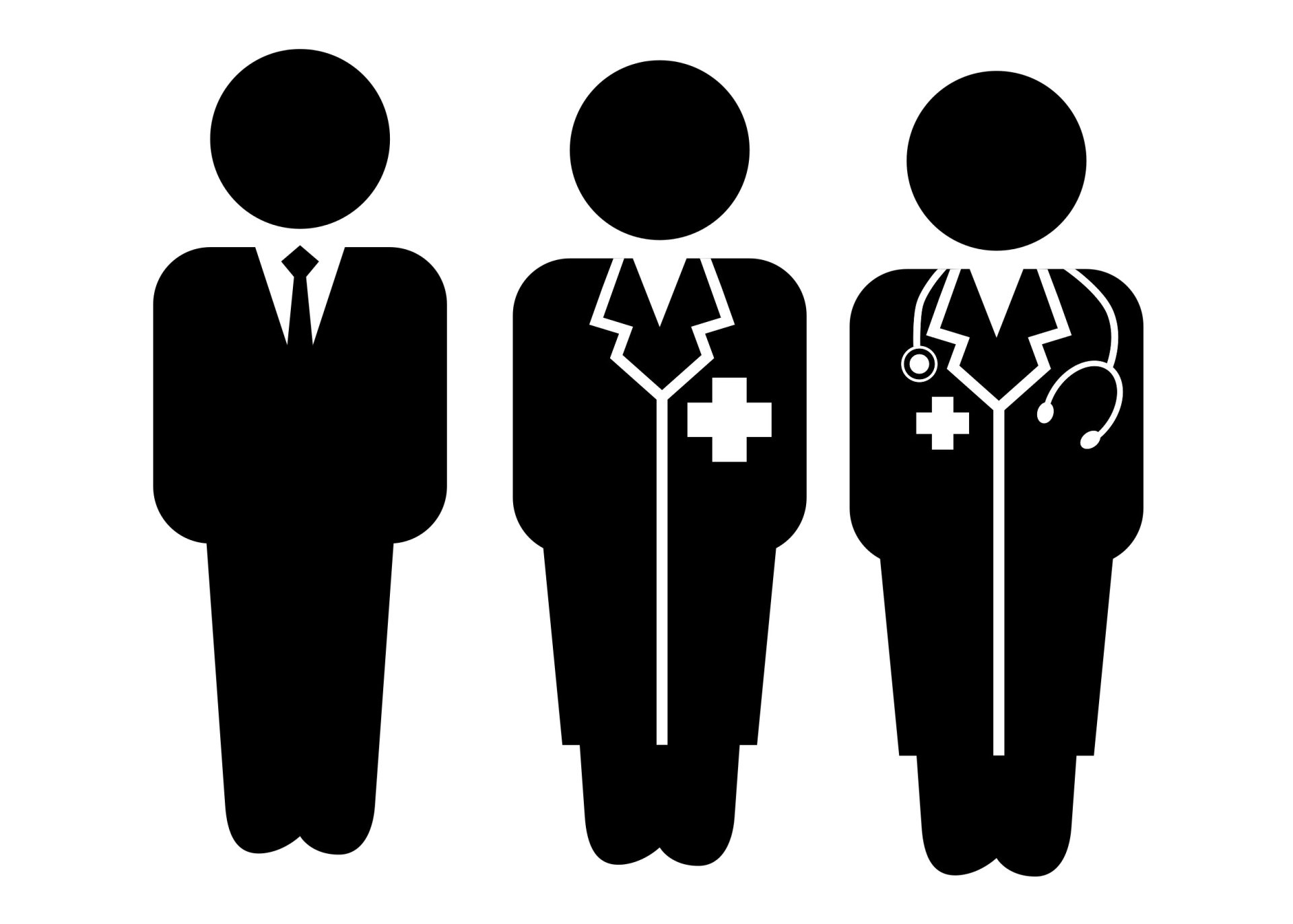The Integral Role of the Clinical Pharmacist Practitioner in Primary Care
- By North Carolina Medical Journal (NCMJ)
- •
- 01 May, 2017

The unique purpose of the pharmacist is to optimize health outcomes by ensuring safe and effective use of medications. Although pharmacists are an accessible health care professional, they are also considered an under-utilized member of the health care team [1]. Many patients perceive the pharmacists' role as dispensing medication; however, pharmacists' scope of practice includes the provision of direct patient care services in primary care settings. According to the American Society of Health-System Pharmacists, pharmacists perform patient assessments; develop collaborative practice agreements with physicians; order, interpret, and monitor medication therapy-related tests; coordinate care for wellness and prevention of disease; deliver immunizations; provide education for patients and caregivers; document care processes in the medical record; and bill for cognitive services (see Table 1) [2]. In North Carolina, pharmacists can be approved by the North Carolina Board of Pharmacy as clinical pharmacist practitioners (CPPs), which allows for medication initiation, modification, and discontinuation under the supervision of a physician in the context of interprofessional teams. This article explores successful team-based models of care that incorporate pharmacists into primary care.
The Impact of Pharmacists on Health Care Outcomes
A vast body of literature supports the value proposition for incorporating pharmacists into interprofessional primary care teams. The National Governors' Association [3] and the Patient Centered Primary Care Collaborative [4] highlight the benefits of pharmacists for patients and health care systems. A Report to the US Surgeon General titled Improving Patient and Health System Outcomes through Advanced Pharmacy Practice provides an evidence-based review of comprehensive patient care services that pharmacists provide [1]. Overall, pharmacists lower health care costs, improve the quality of care provided, and increase patient satisfaction with services [1].
The Asheville Project
North Carolina pharmacists have served as pioneers for innovative care models. In the 1990s, the City of Asheville partnered with pharmacists to provide medication therapy management services for employees with diabetes in what came to be known as The Asheville Project [5]. Patients saw their pharmacists monthly to focus on effective self-management, adherence strategies, basic nutritional concepts, and prevention of diabetes complications. Results demonstrated statistically significant decreases in hemoglobin A1c and LDL, improvements in HDL, decreased sick days, and decreased total health care costs compared to baseline [5]. The Ten City Challenge replicated the Asheville Project, and demonstrated that quality metrics for blood pressure, lipid panels, and hemoglobin A1c improved, and vaccinations and eye exams increased [6]. Moreover, the interventions made by the pharmacists decreased health care costs by $1,079 per patient [6]. Medication management is now an integral component of pharmacy education and practice across the nation.
Clinical Pharmacist Practitioners
CPPs are advanced practice pharmacists in North Carolina who establish a collaborative practice agreement with a supervising physician to manage populations of patients. This North Carolina practice model is highly regarded across the nation as one that promotes pharmacists practicing “at the top of their licenses.”
A survey of CPPs published in 2015 indicated that there were 87 active CPPs across North Carolina [7]. The majority (76%) practiced in ambulatory care clinics, including hospital-based clinics and physician group practices [7]. Only 7% of CPPs practiced in rural communities, and 43 rural counties did not have a CPP. The top 5 therapeutic areas of focus included anticoagulation (63%), hyperlipidemia (50%), diabetes (46%), respiratory diseases (35%), and hypertension (33%) [7].
The experiences of 30 University of North Carolina at Chapel Hill (UNC) Medical Center CPPs who practiced in endocrinology, pain management, family medicine, cardiology, geriatrics, transplant, and primary care have been described in a report titled Prescribing pharmacists in the ambulatory care setting: experience at the University of North Carolina Medical Center [8]. CPPs provided multiple services including managing medications, responding to consultations, writing medication-related policies and procedures, contributing to continuous quality improvement initiatives, assisting patients who could not afford their medications, educating staff and providers, and counseling patients [8]. By focusing on clinical tasks associated with medication management, CPPs allow physicians to spend more time to perform the diagnostic and procedural responsibilities that are unique to medicine.
Annual Wellness Visits
The Affordable Care Act created the Annual Wellness Visit (AWV) in 2011. The AWV is a free benefit for Medicare recipients, and focuses on disease detection, health prevention, and coordination of screening tests through the development and implementation of a personal prevention plan [9]. Under Medicare rules, a licensed practitioner working under the direct supervision of a physician is eligible to perform the AWV [9]. Because pharmacists are skilled in disease prevention and management, there has been interest in utilizing them to conduct these visits.
A CPP completed AWVs for 98 patients along with other patient care responsibilities over the course of 10 months in an internal medicine clinic. Each visit lasted a mean of 73 minutes, and 4.5 interventions were made per patient during the encounter [10]. Interventions included referrals to other providers such as nutritionists and physical therapists; education interventions about topics such as advance directives and home safety; laboratory tests; immunizations; and medication initiation [10].
Another study evaluated the effectiveness and financial benefit of pharmacist-led AWVs along with comprehensive medication management provided for high-risk elders who received primary care services in a retirement community [11]. In addition to completing the AWV for 53 patients, the CPP identified 278 medication-related problems for the cohort, including suboptimal medication use (32.7%), insufficient therapeutic monitoring (25.2%), and under-treatment of a chronic condition (16.9%). Generated revenues exceeded the cost of the pharmacist's time by 38.1% [11]. AWVs performed by pharmacists can decrease risk of polypharmacy, underprescribing, and adverse drug events, and help practices achieve quality metrics required by Medicare accountable care organizations.
It is feasible for practices to cover the cost of the pharmacist by utilizing them for AWV visits. Pharmacists should complete 1,070 AWVs annually to cover the cost of their salary, which is approximately 40% of the pharmacist's time in clinic if seeing patients full-time [12]. The remaining time could be used for population health initiatives that are important focus areas of the practice but which yield lower reimbursement rates [12].
Transitions in Care
High readmission rates for patients discharged from hospitals remain a quality of care concern. Medicare has recently decreased reimbursement rates for hospitals with high 30-day readmission rates. Transitions in care is a suitable area to incorporate pharmacists since medication changes occur frequently in the hospital setting.
A retrospective observational study of 140 patients compared readmission rates between two models of care, including a physician only group and a physician/CPP group [13]. Patients in the physician-only arm had a 30-day readmission rate of 34.3%, compared to the physician/CPP group rate of 14.3% (P < 0.05) [13]. The patients who saw the physician/CPP team were more likely to receive new medications, discontinue a medication, and have nonadherence addressed [13].
A transitions of care service was established in a family medicine clinic for patients transitioning into care from the hospital [14]. A team-based approach was adopted that included a pharmacist, physician, and nurse care manager. The CPP met with the patient and/or caregiver by phone to assess medications and coordinate care of the patient. The team approach to transitions decreased 30-day hospital readmissions from 14.2% to 5.3%, which was a 62.6% reduction [14].
Rural Pharmacy Practice
Patients in rural communities have less access to both primary and specialty care, including clinical pharmacy services [7, 15]. Significant health disparities exist in rural communities compared to their urban counterparts, including increased rates of tobacco abuse, chronic illness, and poverty [15]. Access to health care services is limited and is expected to worsen due to the primary care physician shortage and the aging population [15]. It is important to ensure that patients in rural communities have access to comprehensive medication management provided by pharmacists in a team environment, and that health care transformation is scalable to rural America. Current legislation in Congress seeks to recognize pharmacists as providers under the Social Security Act to increase patient access to clinical services in rural and underserved areas, and to create a reimbursement model that parallels nurse practitioners and physician assistants [16]. This legislation would not change the scope of pharmacy practice, but would establish a financially sustainable business model for incorporating pharmacists into team-based care [16].
A new rural health initiative at the UNC Eshelman School of Pharmacy has been developed to prepare pharmacists for practice, service, and leadership in rural communities. This initiative seeks to recruit students from rural North Carolina and return them to rural communities to practice, create new team-based models of care that incorporate CPPs into primary care clinics in small towns, and to improve the quality of care for rural populations.
Pharmacists and Telehealth
Telehealth has been utilized to deliver pharmacist-managed anticoagulation services [17]. Clinical video telehealth (CVT) technology was used in a Veterans Affairs medical center for 151 patients in a community-based outpatient clinic a distance away [17]. A telehealth technician performed point-of-care International Normalized Ration testing, and the pharmacist conducted the medical history and evaluated warfarin outcomes via CVT. The mean time in therapeutic range was comparable before and after telehealth implementation. The mean score on a five-point Likert scale for the question, “I would rather use telehealth to receive this service than travel a long distance to see my provider,” was 4.9 [17].
An analysis of a pharmacist-managed diabetes clinic provided via telehealth in the Veterans Affairs system indicated that the intervention decreased the hemoglobin A1c by a mean of 2% over 6 months, and that the percentage of patients achieving the goal A1c increased from 0% at baseline to 38% at 6 months [18]. These studies indicate that pharmacists who provide chronic disease management in primary care by telehealth improve quality metrics and patient satisfaction, which are important components of the quadruple aim. The quadruple aim includes improving the quality of care, lowering healthcare costs, improving the patient experience, and increasing provider satisfaction.
A Practice Model Example
The Mountain Area Health Education Center is the home of family medicine, obstetrics/gynecology, surgery, psychiatry, dental, and pharmacy residency programs. In 2001, a CPP joined the organization to provide comprehensive medication management. The initial areas of focus included development of a pharmacy clinic to manage anticoagulation and asthma, and triage medication assistance concerns [19]. As health care transformation progressed, CPPs were incorporated into team-based osteoporosis clinics, and diabetes and pain management group models. Recently, delivery of pharmacist services has expanded beyond the pharmacy managed clinic to include a productivity model and a complexity of care model. In the productivity model, a CPP partners with a physician in a clinic, allowing the team to see 4 more patients per half-day. In the complexity model, a CPP partners with physicians in a pod model to see the patients in clinic that day who are in highest need of comprehensive medication management.
Reimbursement
Development of a sustainable business model for incorporating pharmacists into the primary care setting is challenging. Because pharmacists are not yet recognized as providers by Medicare, billing is frequently limited to level 1 (ie, nurse) visits [20]. Utilizing pharmacists in AWVs can offset the cost of the pharmacist while also improving quality metrics [11, 12], and incorporating pharmacists into transitions of care visits can decrease hospital readmissions [13, 14]. Although reimbursement of pharmacists for services is beyond the scope of this article, the reader is referred to the textbook, Building a Successful Ambulatory Care Practice: a Complete Guide for Pharmacists [21].
The Physician Perspective
Primary care physicians, whose average panel is 2500 patients, do not have enough time in a patient visit to diagnose acute problems, manage chronic illnesses, and implement prevention guidelines while still maintaining a positive relationship with their patients. In the average non-team based care practice, a physician spends 10.6 hours per day managing and documenting encounters [22]. Incorporating a CPP onto the primary care team improves the efficiency of the physician. The CPP is not a physician extender, but rather a valuable team member with expertise in pharmacotherapy that is more extensive than the training and skills of most physicians, thus enhancing the care for the patient and allowing more time for other services unique to medicine.
Conclusion
The role of the pharmacist has transitioned beyond dispensing medication to include direct patient care roles in primary care that complement the skill set of the physician. Pharmacists are valuable team members who decrease the cost of care and improve the quality of care. Rear Admiral Scott Giberson, Chief Professional Officer for Public Health Service Pharmacists, has stated, “I firmly believe that one of the most evidence-based and cost-effective decisions we can make as a nation is to maximize the expertise and scope of pharmacists, and minimize expansion barriers to successful health care delivery models the right thing to do for our patients” [1].


Researchers at the UNC Eshelman School of Pharmacy looked at what happens when pharmacists are tasked with conducting annual Medicare wellness visits in a medical practice. During the patients’ first visit, the pharmacists spotted at least one medication-related problem in more in than 90 percent of patients, the majority of which were able to be resolved by the pharmacist. During six- and twelve-month follow-up visits, they uncovered medication issues for all patients.
“Pharmacists performing annual wellness visits have a prime opportunity to provide comprehensive medication management, a much-needed service for older adults,” said Tasha Woodall, Pharm.D., lead author of the study and an assistant professor of clinical education at the School. “For every patient the pharmacist saw, there was something that could be done to make their medications work better for them.”
CMM ensures each patient’s medications are individually assessed to determine that each one is appropriate for the patient, effective for the medical condition, safe given the patient’s other conditions and medications and able to be taken by the patient as intended.
Wellness visits were created in 2011 as part of the Affordable Care Act. Medicare Part B covers an annual visit to the doctor for the purpose of developing or updating a personalized plan to prevent disease and disability. Pharmacists can conduct these visits under a physician’s supervision and be reimbursed by Medicare at the same rate. The visit includes activities such as administering a health survey, conducting a complete medication review and taking measurements of weight, blood pressure, and cognitive function.
The reimbursement received from Medicare for these visits exceeded the cost of delivering the care by more than 38 percent, the researchers found. Pharmacists lack what is known as “provider status” with Medicare and are not usually able to be reimbursed for services provided directly to patients. However, the annual wellness visit presents a special opportunity to improve pharmacists’ revenue generating potential.
“Having pharmacists conduct annual wellness visits is a win-win for patients and the medical practice,” said Suzanne Landis, M.D., M.P.H., a co-author of the paper and a recently retired MAHEC physician. “It results in a positive return on investment for primary-care practices and frees up physicians to focus on patients’ chronic and acute illnesses.”
Fifty-three patients at Mountain AHEC participated in the study. Their average age was 82, and each had three or more chronic medical conditions and were taking from three to 27 medications with 12 being the median number of meds taken. Thirty-nine were women. The pharmacists saw the participants in March, April and May of 2013. The study was published in the American Journal of Health-System Pharmacy.
Researchers found a total of 278 medication-related problems among the study participants. For nearly 33 percent of patients, the drug they were on was not the right one for their condition. More than 25 percent of patients weren’t being monitored as required for the medication they were taking. Nearly 17 percent weren’t receiving enough treatment for their condition, and almost 16 percent weren’t getting the right amount of medicine or not getting it at the right time.
In a 2014 study, UNC researchers examined the feasibility of using wellness visits as a way for physicians to pay for adding a pharmacist to a medical practice. They calculated that 1,070 wellness visits a year—or approximately six visits per day — are needed to cover a $120,000 pharmacist’s salary and would require about 40 percent of a pharmacist’s time to complete. The approach works best in larger medical practices, they found, which are more likely to have the needed volume of patients.
MAHEC started a pilot program in 2012 where a pharmacist took over the wellness visits for three physicians. Patients received information about the scope and purpose of the visits before coming in, which helped keep the visits focused and on schedule. Today, all wellness visits at MAHEC are conducted by pharmacists.

Physicians seeking a way to pay for the expertise of a pharmacist in their medical practices could look to Medicare annual wellness visits to help cover the cost, according to a study from the UNC Eshelman School of Pharmacy.
Medicare Part B covers an annual visit to the doctor for the purpose of developing or updating a personalized plan to prevent disease and disability. Pharmacists can conduct these visits under a physician’s supervision and be reimbursed at the same rate. The visit includes activities such as administering a health survey, conducting a complete medication review, and taking measurements of weight, blood pressure, and cognitive function.
Bigger is Better
It takes 1,070 wellness visits a year—or approximately six visits per day—to cover a $120,000 pharmacist’s salary, the study’s authors calculated. Their findings were published in the Journal of the American Pharmacists Association.
For a large medical practice (fifteen physicians), at least 18 percent of its eligible patients must complete an annual wellness visit with a pharmacist to reach $120,000 in reimbursements.
A medium-sized practice (five physicians) needs at least 54 percent of its patients to come in.
A small medical practice with two physicians would not have enough patients to afford a pharmacist funded by wellness visits alone.
UNC Eshelman School of Pharmacy and UNC School of Medicine faculty based in Asheville, North Carolina, conducted the study. They assumed that each practice has 2,000 patients per physician with 20 percent on Medicare. The hypothetical pharmacist in the study is available to see patients nearly thirty-eight weeks a year. The study also accounts for the fact that a patient’s first wellness visit is reimbursed at a higher rate than subsequent visits.
Here’s the Catch
Only 11 percent of eligible patients nationally actually use their wellness visit benefit, according to a 2013 report from the U.S. Department of Health and Human Services. That’s up from 9 percent in 2012. The wellness visits were created in 2011 as part of the Affordable Care Act.
The study authors practice at the Mountain Area Health Education Center clinic in Asheville. MAHEC would be a large practice in the study based on the number of patients seen. Physicians there started conducting wellness visits in 2011 and found them difficult to complete in the fifteen minutes allotted.
MAHEC started a pilot program in 2012 where a pharmacist took over the wellness visits for three physicians. Patients received information about the scope and purpose of the visits before coming in, which helped keep the visits focused and on schedule, says Courtenay Wilson, PharmD, senior author of the study and a MAHEC pharmacist.
“I can listen to their concerns and make sure that patients know that I’m hearing their concerns,” Wilson says. “I then schedule a follow-up visit with a physician who will know all of the issues that we have identified and have up-to-date records for the patient. It’s a nice partnership.”
By January 2013, all wellness visits at MAHEC were automatically scheduled with a pharmacist.
“From the doc’s perspective, the wellness visit takes a fair amount of time,” says Lisa Ray, MD, another author of the study and a MAHEC physician. “Handing it over to someone who is extremely competent frees us up to see other patients in those time slots. The added bonus is that every one of our Medicare patients has a pharmacist looking over their medication list.




